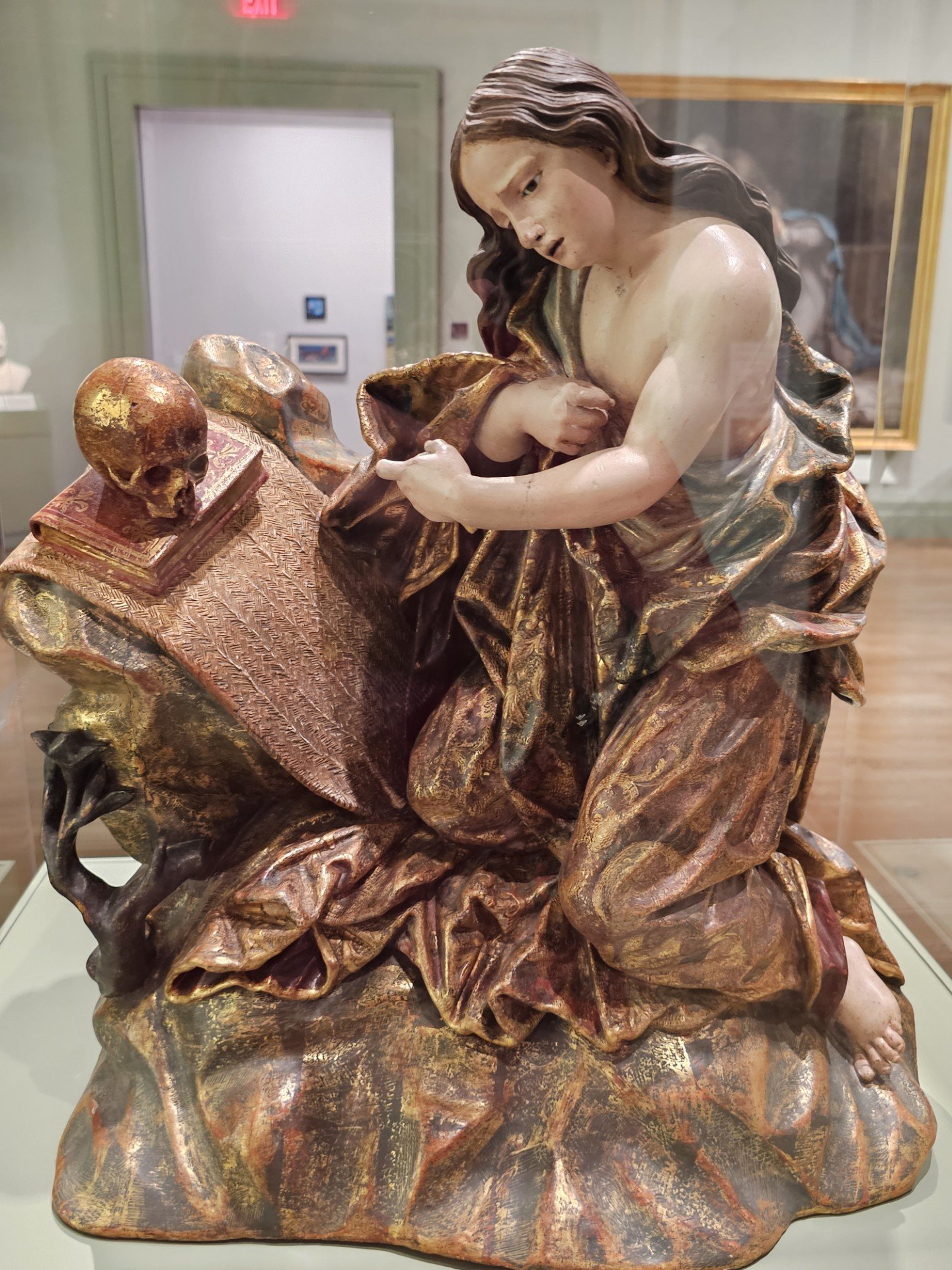One of the surprising features of this small museum that is packed with all sorts of things is the very diversity of those things, for instance quite a lot of Greco-Roman and Egyptian objects, and we will look at them in this and the next post. There are for instance a lot of Roman grave steles, and some urns and sarcophagi as well, for instance the one immediately below.
Many of these are inscribed with D.M. short for Dis Manibus– to the spirits of the dead, and then the dedication about the deceased follows. You can learn a lot about a culture from their views of the dead. Basically, they believe those spirits are alive in the afterlife. And sacrifices area appropriate to honor not only the gods but also the dead.
Notice the hole in the bottom of the sarcophagus to let the rain water out, which means that this one was not buried but like many others was publicly displayed in the open air, sometimes even on top of a mausoleum. Honoring the dead involved preserving their memory by public displays and inscriptions in the Greco-Roman world. This was not the normal traditional Jewish practice which involved burial in a cave or a tomb, and then later gathering the bones and putting them in a labelled ossuary. (during the two centuries before and after Christ).
Some of the steles are elaborate, some rather simple, depending on what the family could afford.






























 English (US) ·
English (US) ·